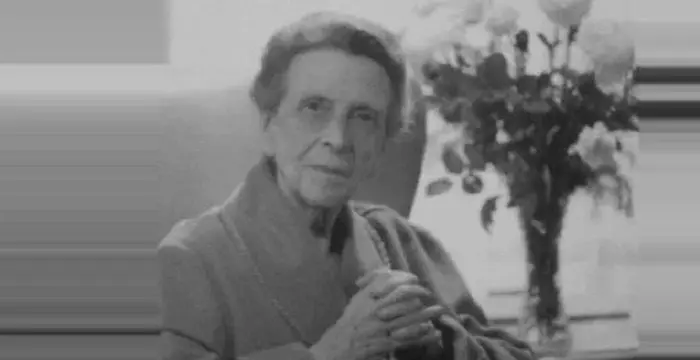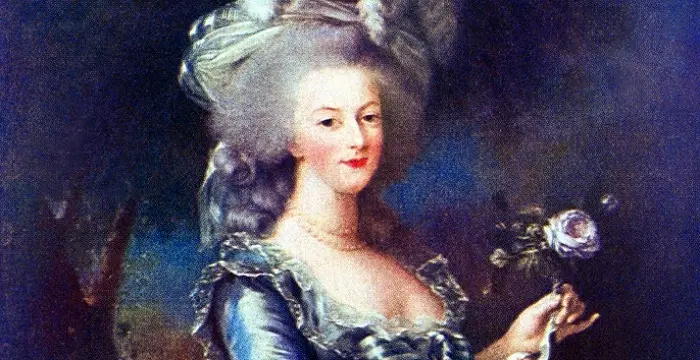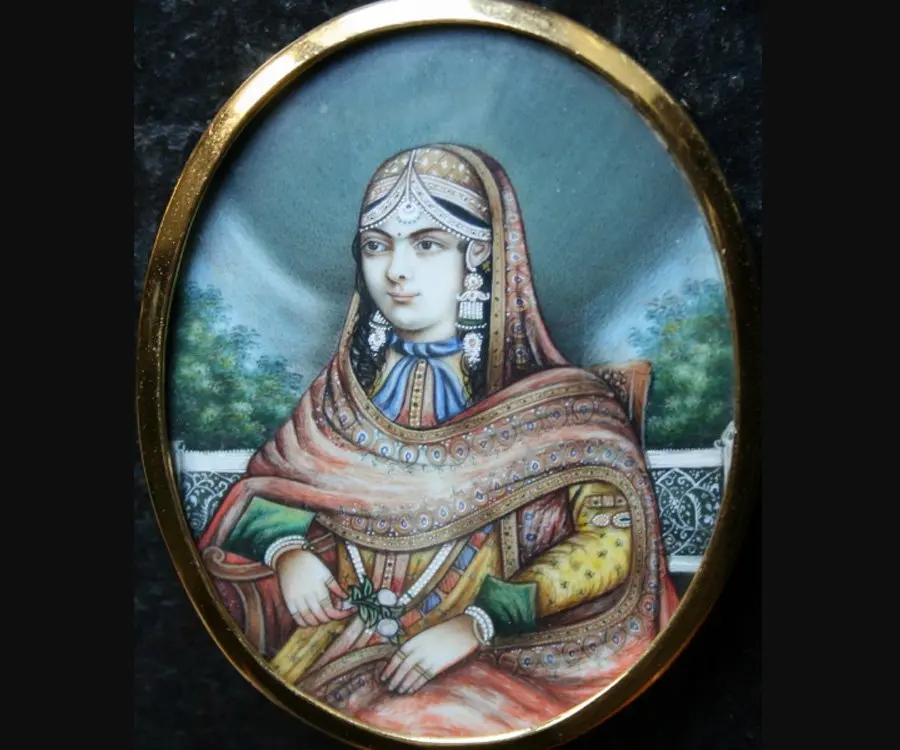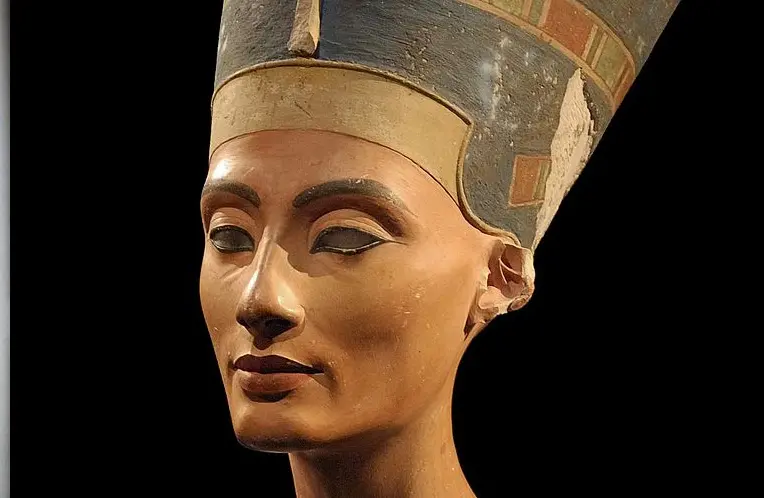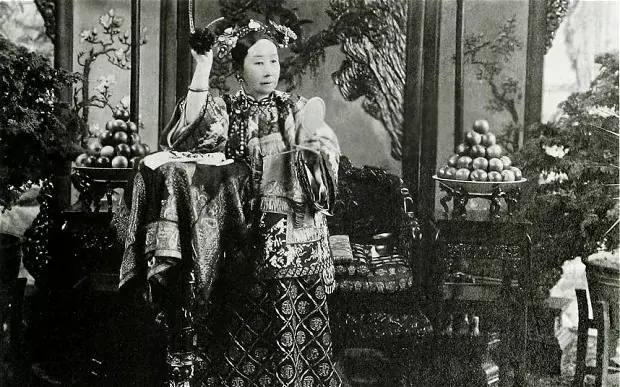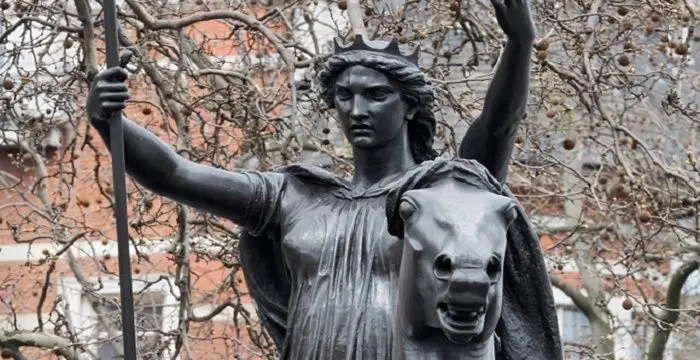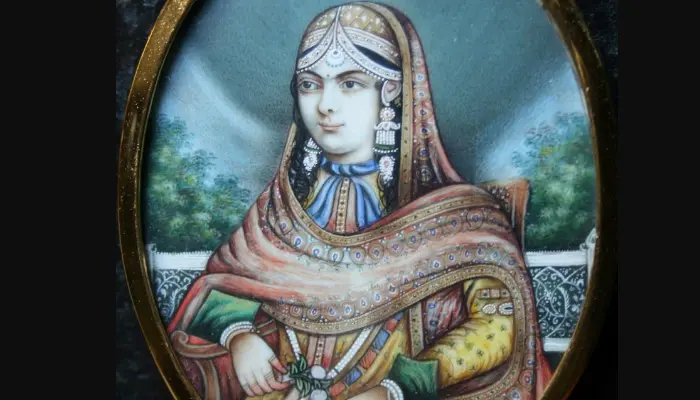
Mariam-uz-Zamani - Akbar's Third Wife, Family and Personal Life
Mariam-uz-Zamani's Personal Details
Mariam-uz-Zamani, also known in history as Harka Bai and Jodha Bai, was the third wife of the Mughal Emperor Akbar
| Information | Detail |
|---|---|
| Birthday | 1542 |
| Died on | May 19, 1623 |
| Nationality | Indian |
| Famous | Historical Personalities, Empresses & Queens, Akbar's Third Wife, Empresses, Queens |
| Spouses | Akbar |
| Known as | Harkhan Champavati, Jodhabai, Haarkha Bai, Heer Kunwari |
| Childrens | Jehangir |
| Gender | Female |
| Father | Raja Bihari Mal |
| Famous as | Akbar's Third Wife |
| Died at Age | 81 |
// Famous Queens
Jetsun Pema
Jetsun Pema is the Queen consort of Bhutan. Check out this biography to know about her childhood, family life, achievements and fun facts about her life.
Princess Alice of Battenberg
Princess Andrew of Greece and Denmark, also known as Princess Victoria Alice Elizabeth Julia Marie of Battenberg, was the mother of Prince Philip, Duke of Edinburgh and mother-in-law of Queen Elizabeth II. This biography profiles her childhood, famil
Marie Antoinette
Marie Antoinette was the Queen of France and Navarre from 1774 to 1792. who played a major role in provoking the French Revolution. This biography of Marie Antoinette provides detailed information about her childhood and life
Mariam-uz-Zamani's photo
Who is Mariam-uz-Zamani?
Mariam-uz-Zamani happens to be one of the most fascinating personalities in the medieval history of India. The third wife of Emperor Akbar, she has been known by many names in the history such as Harka Bai, Jodha Bai with the latter name indicating that she was born in Jodhpur, but many historians also claim that she was in fact born in Amber region of Rajasthan. She was married off to Akbar by her father Raja Bihari Mal to secure an alliance with the Moguls, which was mostly due to the fact that Rajput houses at that time were at each other’s throat to sit on the royal Amber throne. The decision of marrying a Rajput princess to a Muslim ruler was met with severe criticism from Indian rulers. Akbar’s courtesans also condemned him for going ahead with the marriage with a Hindu princess, but there was no stopping the marriage, and the Emperor went ahead with it. Akbar loved Mariam with all his heart, and she quickly became his most loved wife and the first one to adorn the royal household with an heir, Jahangir. She was a strong willed lady, who established Hindu deity’s idols inside her palace, against the rules. She oversaw the trades with Europeans and other gulf countries. Mariam died in 1623 and her son Jahangir built her tomb in Agra, known as Mariam’s Tomb.
Childhood & Early Life
As per the historical records, Harka Bai was born as the eldest daughter of a Rajput royal Rajaj Bihari Mal on 1st October 1542 in Amer, the present day Jaipur. She was born amidst power struggle among the Rajputs, in a time when Moguls were stretching their empires to faraway lands in the Indian subcontinent. Ratan Singh, Bihar Mal’s nephew, was the King of Amer when she was born but somehow the constant battles made Amer a battleground for the throne, and Raja Ratan Singh was killed by his brother Askaran. However, the noblemen denied Askaran’s claim to the throne and as a result, Bihari Mal was made the king of Amer.
Harka Bai’s training to be a princess was started at a very early age. In those times, the royal women didn’t have the privilege to marry the person they loved; they were just a medium to establish political or business alliances, while the men could marry as many women as they wanted. Harka Bai was to be given to a Rajput prince. As per the rituals of Rajputs, they trained their daughters in the fighting skills along with educating them in politics, religion, business trades and other aspects of being a royal.
When Mogul Emperor Akbar offered the Rajputs to surrender themselves and become a part of Mogul Empire, his offer was immediately rejected by most of the Rajputana rulers. Akbar offered high rewards to those who surrendered, and proclaimed that ones that would not kneel should be ready to face his ‘wrath’. The Amber kingdom was already weak from all the power struggles and Raja Bihari Mal didn’t know of any other way to save his kingdom. He offered Akbar his daughter’s hand, and Akbar saw in it a great opportunity to impress the Hindus, especially the Rajputs, the most stubborn yet bravest of Indians, and bring them under his sway.
Marriage With Akbar & Later Life
Akbar had married only Muslim women so before accepting his marriage to Harka Bai, he was initially confused as most of his royal courtesans were against bringing a Hindu princess into the royal court. They were expecting that Harka would commit suicide, like many other Hindu princesses who were forced into marrying Muslims, but against all odds, Harka Bai agreed to the match, seeing her family’s interests. Akbar appreciated her and eventually agreed to marry her, against the warnings by radical Islam supporters at his court.
The marriage took place in the early part of the year 1562 and by then, Harka Bai knew that she will become an outcast in her community by marrying a Muslim ruler. So she convinced Akbar to not force conversion on her, and she also requested that she would worship her Hindu deities in her palace. Akbar was sceptical at first, but eventually agreed to her demands. The marriage gave Harka Bai the title of Mariam uz-Zamani, a very respectable honour given to the Mogul queens.
Akbar also received a lot of backlash from his family for saying yes to the alliance. His aunts and cousins at Agra, among other royalties, didn’t attend the wedding and worse, Akbar had started ignoring his other Muslim wives, namely Ruqaiah Begum and Salima as Mariam grew on him. Amidst all the hate, Akbar managed to hold on to the marriage with Harka Bai and when she gave birth to Akbar’s first son and heir; she was accepted to an extent by the same people who despised her.
She gave birth to Salim Jahangir in 1569, who would later become the emperor after Akbar. But she wasn’t welcomed back into her hometown quite yet. In all the years she was married to Akbar, she only visited Amber twice or thrice, and she was insulted every time and was told not to come there. Upon hearing this, Akbar ordered her never to visit Amber ever again. Despite the fact that Akbar honoured many of Harka’s relatives with important positions in the royal court, the entire Rajputana despised Bihari Mal and Harka Bai for going against their religion.
Hurt from this treatment, Harka Bai never dared to visit her hometown, but overtime, her warm relationship with her cousin brother Surajmal, or Sujamal, remained her only tie to her previous life as the princess of Rajputana. Meanwhile, back in the royal court, the objections were rising fast due to the presence of Hindu deities in the royal palace of princess Harka, also called Jodha Bai by some. Akbar ignored the offences and carried on with enjoying a loving relationship with his wife. The marriage was a happy one, and Jodha remained the most loved ones of Akbar’s wife till the day he died. But she was devoid of any major role in the royal court.
Under Jahangir's Reign
Although Mariam wasn’t involved too much into the matters of royal administration at first when Jahangir became the emperor, her skills enabled her to assume a major role in the proceedings of the royal court. She was politically involved in the court until Nur Jahan took her place as the empress. Harka Bai achieved the rare privilege to issue the royal order, or ‘Farman’, and she also oversaw the construction of several mosques, gardens and wells around the country. She was known for her strong
headedness and will power with an impeccable presence of mind.
When Akbar died in 1605, Harka Bai started assisting her son Jahangir in all the important matters of the court. She handled the ship trades of Moguls, which enabled the Muslims to visit the holy city of Mecca and the trades of spices with Europeans were also under her. Through her business brilliance, she contributed greatly to the royal court’s wealth by setting up some lucrative business deals with the Europeans through trading of silk and spices.
In 1613, when her ship Rahimi was captured by the Portuguese pirates, she faced a bitter outrage in the royal court. Her son, the Emperor Jahangir came to her aid and ordered the seizure of Daman, the Portuguese ruled little island. This particular event was a wealth
centred act for the most part, which would later become a very important reason for colonization of India, and it could also be said that Jahangir was the last great Mogul emperor, and it was mostly due to the council he received from his mother, after that it went all downhill for the Mogul Dynasty and the Indians in general.
Death
The cause of her death is still unknown, but most historical accounts state that it was a peaceful death due to natural causes. She died in 1623, and before her death, she requested her tomb to be placed near her demised husband, Akbar. Her tomb is located at Jyoti Nagar, a kilometre away from the tomb of Akbar. Her son was deeply saddened with her death, and ordered the construction of a mosque in her name, which is located presently in Lahore, Pakistan, with the name ‘The Mosque of Mariam Zamani Begum Sahiba’.
Legacy
Mariam uz-Zamani was a strong woman, who faced immense hatred and name calling by her own people and yet she stayed strong supporting her husband and her son later. She became a subject of many tales and poems after her death and continues to be so. Her name though, has always been a matter of confusion, as the official biographies of Akbar and Jahangir mention her as Mariam uz-Zamani, and Harka Bai, while some 17th and 18th century poets mention her by the name, Jodha Bai.
In the Indian film ‘Mughal-e-Azam’, she has been frequently mentioned as Jodha Bai, along with the 2008 film ‘Jodha Akbar’. The confusion about her name raised many eyebrows among the Rajputs, who also claimed that the movie portrayed many other facts wrong apart from the name.
// Famous Empresses
Jetsun Pema
Jetsun Pema is the Queen consort of Bhutan. Check out this biography to know about her childhood, family life, achievements and fun facts about her life.
Princess Alice of Battenberg
Princess Andrew of Greece and Denmark, also known as Princess Victoria Alice Elizabeth Julia Marie of Battenberg, was the mother of Prince Philip, Duke of Edinburgh and mother-in-law of Queen Elizabeth II. This biography profiles her childhood, famil
Marie Antoinette
Marie Antoinette was the Queen of France and Navarre from 1774 to 1792. who played a major role in provoking the French Revolution. This biography of Marie Antoinette provides detailed information about her childhood and life
Mariam-uz-Zamani biography timelines
- // 1st Oct 1542As per the historical records, Harka Bai was born as the eldest daughter of a Rajput royal Rajaj Bihari Mal on 1st October 1542 in Amer, the present day Jaipur. She was born amidst power struggle among the Rajputs, in a time when Moguls were stretching their empires to faraway lands in the Indian subcontinent. Ratan Singh, Bihar Mal’s nephew, was the King of Amer when she was born but somehow the constant battles made Amer a battleground for the throne, and Raja Ratan Singh was killed by his brother Askaran. However, the noblemen denied Askaran’s claim to the throne and as a result, Bihari Mal was made the king of Amer.
- // 1562The marriage took place in the early part of the year 1562 and by then, Harka Bai knew that she will become an outcast in her community by marrying a Muslim ruler. So she convinced Akbar to not force conversion on her, and she also requested that she would worship her Hindu deities in her palace. Akbar was sceptical at first, but eventually agreed to her demands. The marriage gave Harka Bai the title of Mariam uz-Zamani, a very respectable honour given to the Mogul queens.
- // 1569She gave birth to Salim Jahangir in 1569, who would later become the emperor after Akbar. But she wasn’t welcomed back into her hometown quite yet. In all the years she was married to Akbar, she only visited Amber twice or thrice, and she was insulted every time and was told not to come there. Upon hearing this, Akbar ordered her never to visit Amber ever again. Despite the fact that Akbar honoured many of Harka’s relatives with important positions in the royal court, the entire Rajputana despised Bihari Mal and Harka Bai for going against their religion.
- // 1605When Akbar died in 1605, Harka Bai started assisting her son Jahangir in all the important matters of the court. She handled the ship trades of Moguls, which enabled the Muslims to visit the holy city of Mecca and the trades of spices with Europeans were also under her. Through her business brilliance, she contributed greatly to the royal court’s wealth by setting up some lucrative business deals with the Europeans through trading of silk and spices.
- // 1613In 1613, when her ship Rahimi was captured by the Portuguese pirates, she faced a bitter outrage in the royal court. Her son, the Emperor Jahangir came to her aid and ordered the seizure of Daman, the Portuguese ruled little island. This particular event was a wealth
- // 1623The cause of her death is still unknown, but most historical accounts state that it was a peaceful death due to natural causes. She died in 1623, and before her death, she requested her tomb to be placed near her demised husband, Akbar. Her tomb is located at Jyoti Nagar, a kilometre away from the tomb of Akbar. Her son was deeply saddened with her death, and ordered the construction of a mosque in her name, which is located presently in Lahore, Pakistan, with the name ‘The Mosque of Mariam Zamani Begum Sahiba’.
- // 2008In the Indian film ‘Mughal-e-Azam’, she has been frequently mentioned as Jodha Bai, along with the 2008 film ‘Jodha Akbar’. The confusion about her name raised many eyebrows among the Rajputs, who also claimed that the movie portrayed many other facts wrong apart from the name.
// Famous Empresses & Queens
Jetsun Pema
Jetsun Pema is the Queen consort of Bhutan. Check out this biography to know about her childhood, family life, achievements and fun facts about her life.
Princess Alice of Battenberg
Princess Andrew of Greece and Denmark, also known as Princess Victoria Alice Elizabeth Julia Marie of Battenberg, was the mother of Prince Philip, Duke of Edinburgh and mother-in-law of Queen Elizabeth II. This biography profiles her childhood, famil
Marie Antoinette
Marie Antoinette was the Queen of France and Navarre from 1774 to 1792. who played a major role in provoking the French Revolution. This biography of Marie Antoinette provides detailed information about her childhood and life
Nefertiti
Neferneferuaten Nefertiti was an Egyptian queen and chief consort of Akhenaten, an Egyptian Pharaoh. This biography profiles her childhood, family, life as queen, accomplishments, death, and other facts.
Empress Dowager Cixi
Empress Dowager Cixi was a Chinese empress dowager and regent of the Qing Dynasty. This biography profiles her childhood, rise to power, rule, administration and other interesting facts.
Boudica
Boudica was a queen of the Celtic Icenic tribe, who led an uprising against Roman invaders. Check out this biography to know about her childhood, family, achievements, etc.
Mariam-uz-Zamani's FAQ
When was Mariam-uz-Zamani died?
Mariam-uz-Zamani was died at 1623-05-19
Where was Mariam-uz-Zamani died?
Mariam-uz-Zamani was died in Agra, Mughal Empire (Now India)
Which age was Mariam-uz-Zamani died?
Mariam-uz-Zamani was died at age 81
What is Mariam-uz-Zamani nationalities?
Mariam-uz-Zamani's nationalities is Indian
Who is Mariam-uz-Zamani spouses?
Mariam-uz-Zamani's spouses is Akbar
Who is Mariam-uz-Zamani childrens?
Mariam-uz-Zamani's childrens is Jehangir
Who is Mariam-uz-Zamani's father?
Mariam-uz-Zamani's father is Raja Bihari Mal
How famous is Mariam-uz-Zamani?
Mariam-uz-Zamani is famouse as Akbar's Third Wife

